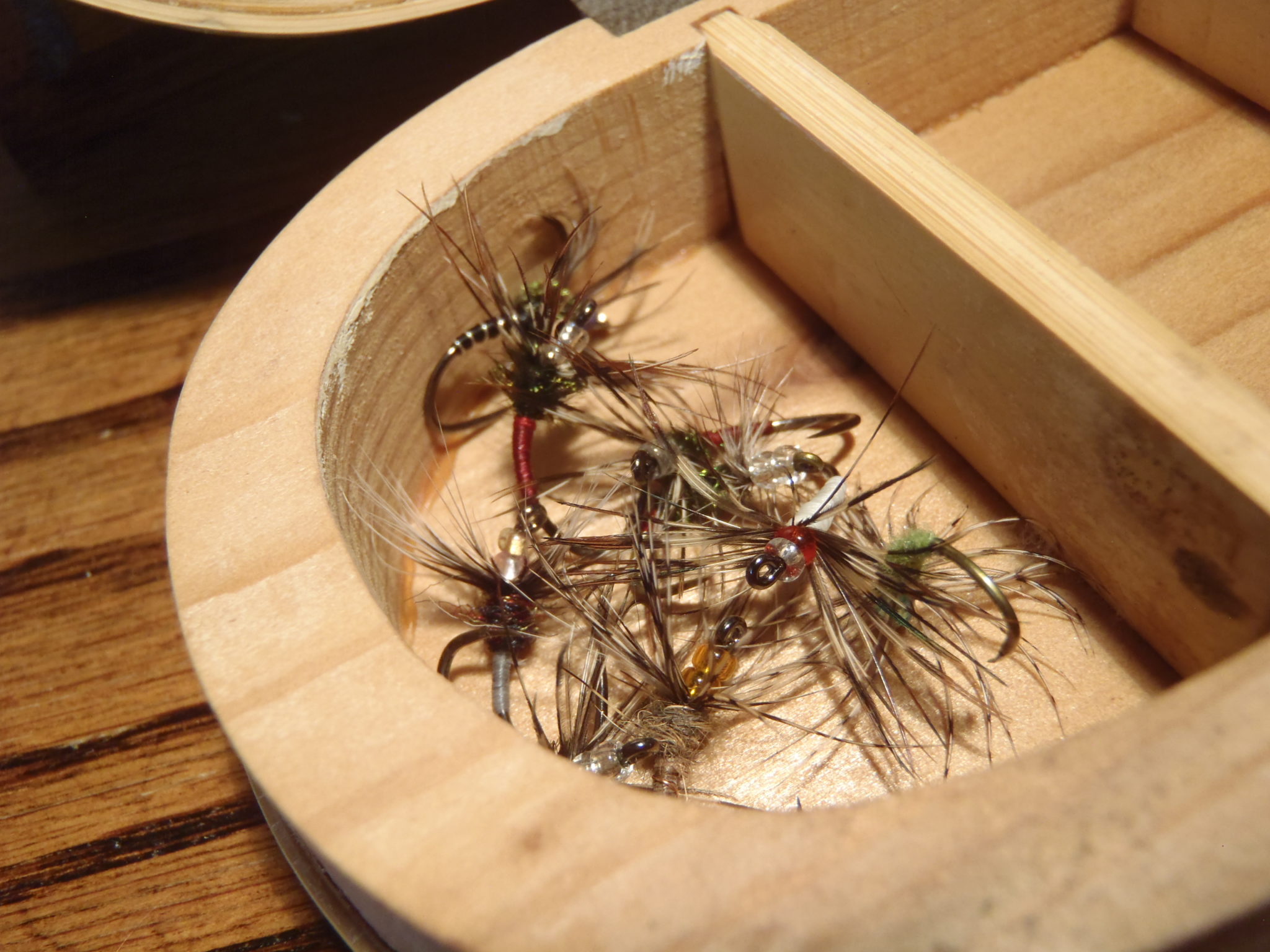 I’ll preface this by saying that that I’m probably not the first one to have thought of this. Whether it’s a new DIY alcohol stove design or a fly pattern I thought was original, it often turns out that someone else had already beaten me to it. But I came up with this design independent of any outside influence so I’m considering it “semi-original”.
I’ll preface this by saying that that I’m probably not the first one to have thought of this. Whether it’s a new DIY alcohol stove design or a fly pattern I thought was original, it often turns out that someone else had already beaten me to it. But I came up with this design independent of any outside influence so I’m considering it “semi-original”.
The basic idea is this: two small glass beads at the front of a sakasa kebari. Fly tiers have been adding beads to sakasa kebari for a long time but they’re usually a size medium and are brass or tungsten. But this design is a little different. You might be asking, “why two small glass beads instead of one bigger one?” The truth is this was born (out of all things) a lack of inventory.
I had been experimenting with some sakasa kebari that incorporated brass and tungsten beads. But for the water I was fishing, I found they sank too well. I was getting snagged on the bottom too much and losing a lot of flies. So, my natural inclination was to try out the same patterns using lighter glass beads. I hadn’t used glass beads in years. I used to use them a lot back when I tied a lot of minuscule midge patterns, but never for tenkara flies.
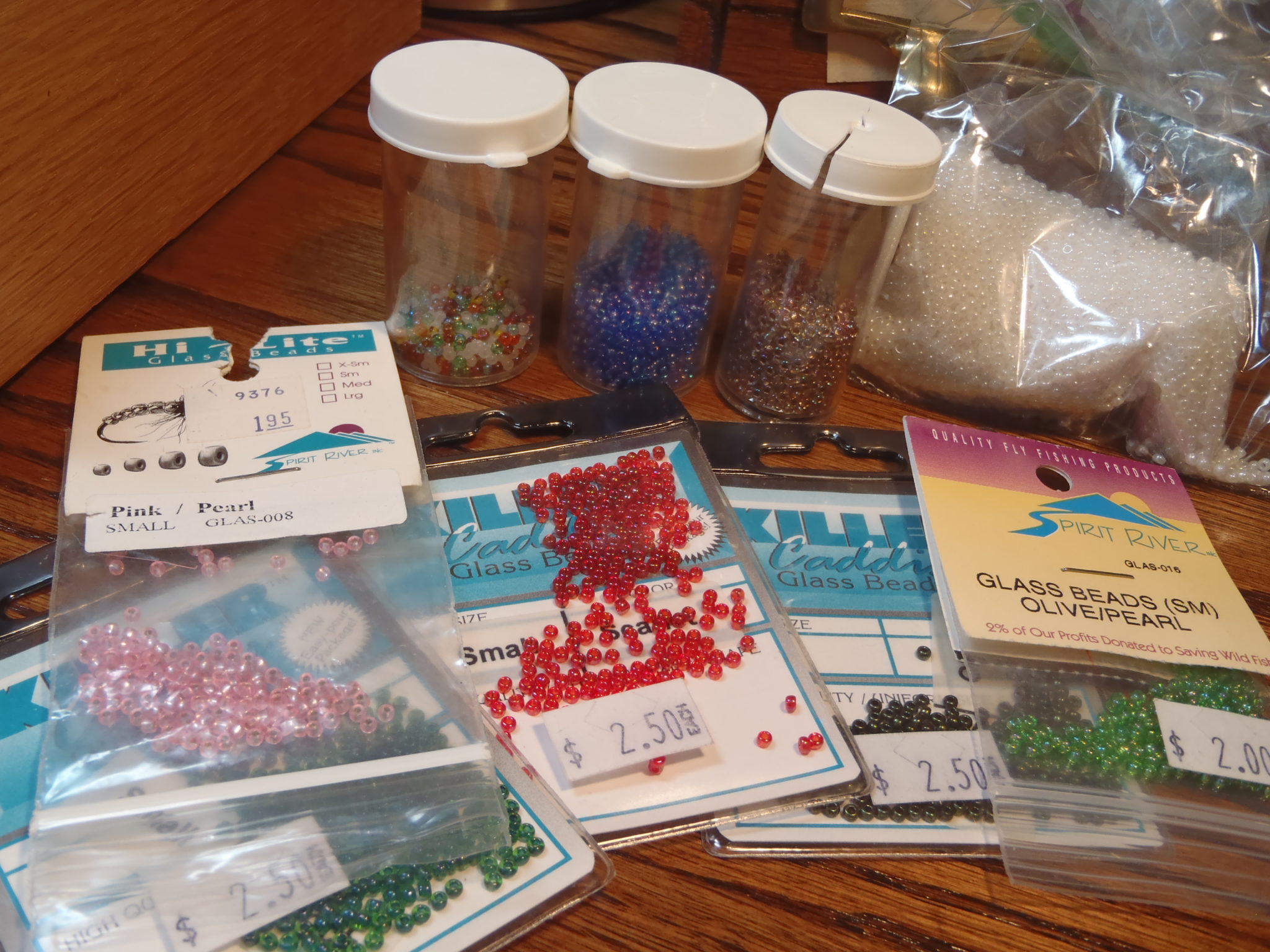 I headed back to my tying desk and started an archeological dig through my glass bead drawers. I discovered dozens of really tantalizing colors–some you can’t even get from fly tying vendors (I used to work near a jewelry bead shop and would buy them in bulk). I was excited at the new possibilities–it was like handing an artist a new color of paint they’d never seen before. There was only one problem. All of them were size small or extra small–none like the size medium I was looking for to fit a #12 hook.
I headed back to my tying desk and started an archeological dig through my glass bead drawers. I discovered dozens of really tantalizing colors–some you can’t even get from fly tying vendors (I used to work near a jewelry bead shop and would buy them in bulk). I was excited at the new possibilities–it was like handing an artist a new color of paint they’d never seen before. There was only one problem. All of them were size small or extra small–none like the size medium I was looking for to fit a #12 hook.
I didn’t really feel like making a trip to the fly shop, so I figured I could just slide two small beads onto the hook, and that would approximate the same weight of one medium bead. And that’s when I came up with the name, “Double-Pane Sakasa Kebari” (“double-pane” as in a double-pane glass window”). I never said I was good at naming flies.
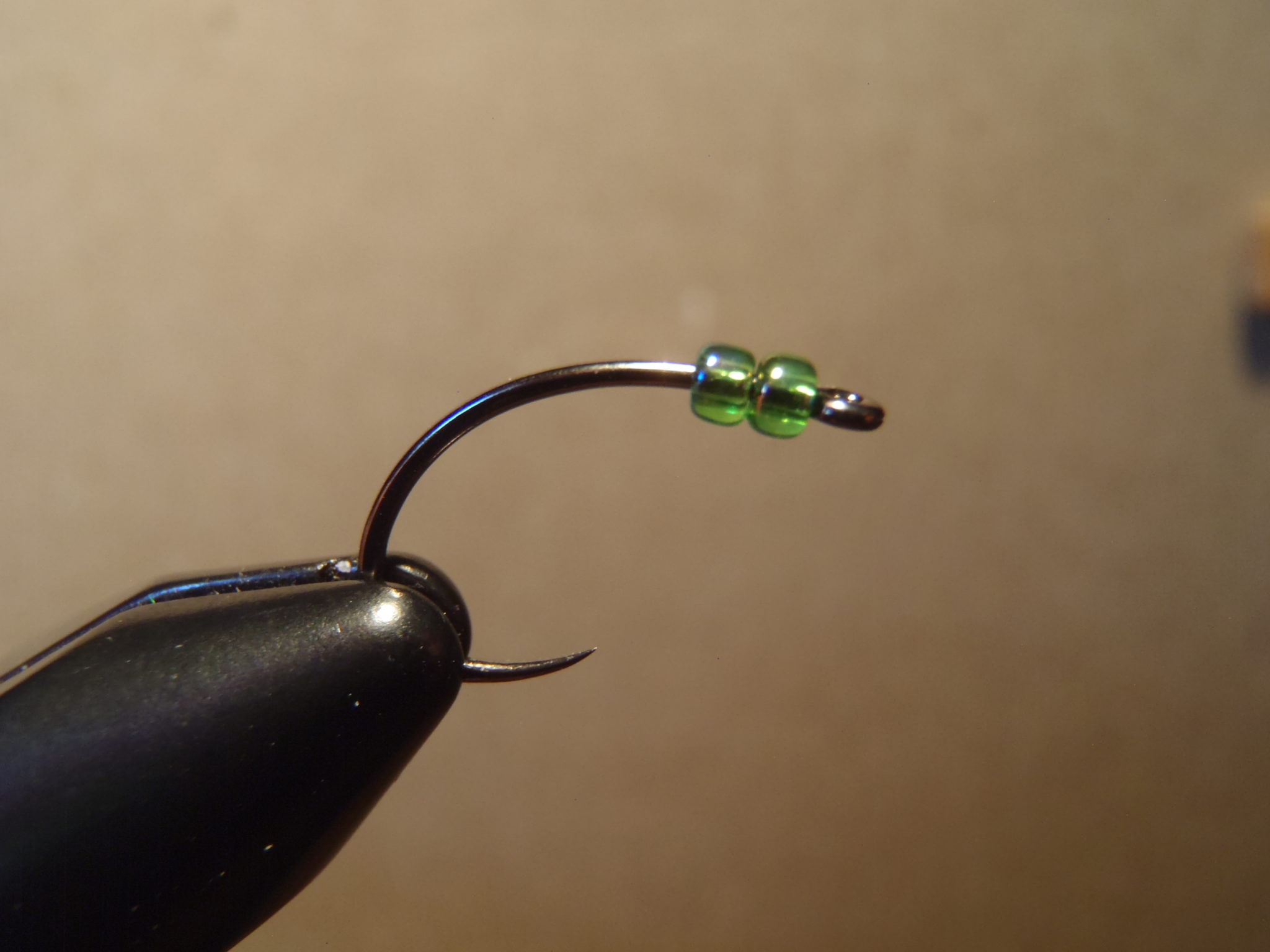 Advantages
Advantages
As soon as I tied the first fly, I recognized some design advantages:
- Most sakasa kebari have an extended base of thread behind the eye which places the hackle more mid-shank (rather than right behind the eye like many western flies). The distance the two small glass beads take up is about perfect to achieve this–placing the hackle in the ideal position.
- Being lighter than brass or tungsten, the fly will sink well, but not so much that it’s getting hung up on the bottom all the time.
- The humps created by the double beads create more sparkle and flash than a single bead increasing the attractor characteristic.
- As you’ll see below, you can even use two differently colored beads to achieve interesting effects such as contrast or visual blending.
Disadvantages
- Probably the biggest drawback I’ve found so far is that not all glass beads will fit all hook styles. It all depends on the way they’re drilled and the bend of a given hook. But in general, they will fit most popular hook designs.
- They’re inconsistent. Though manufactured, working with glass beads is almost like working with a natural material–they have anomalies that you have to account for. For example, the size of the bead can be inconsistent and you might have to scrounge a little to find two of similar size. Or the holes might be different sizes–one slides on perfectly and the other won’t. Just keep in mind that not every bead will fit every hook. But if you find a few that won’t make it past the bend of the hook you’re tying on, don’t throw them away! Save them for later use on other hooks.
- They can crack. I’ve cracked more than a few by trying to force them past the bend. But they’re so cheap (especially if you buy them at a bead shop) that I don’t consider this a major disadvantage. I’ve been fishing glass beads for years and have never had one crack while fishing–only through my stubbornness at the vise.
Examples
Given the myriad of colors available today, there are nearly endless possibilities. If you use your imagination, you can come up with some really unique patterns that the fish have never seen before–something I think is a huge advantage to the angler especially on highly pressured waters. As a side note, the pictures don’t really do the following patterns justice. The beads look much more vibrant and translucent in real life. But here are a few ideas to get you thinking …
A Takayama Sakasa Kebari with crystal/pearl beads (this is so far my most effective glass-bead pattern)
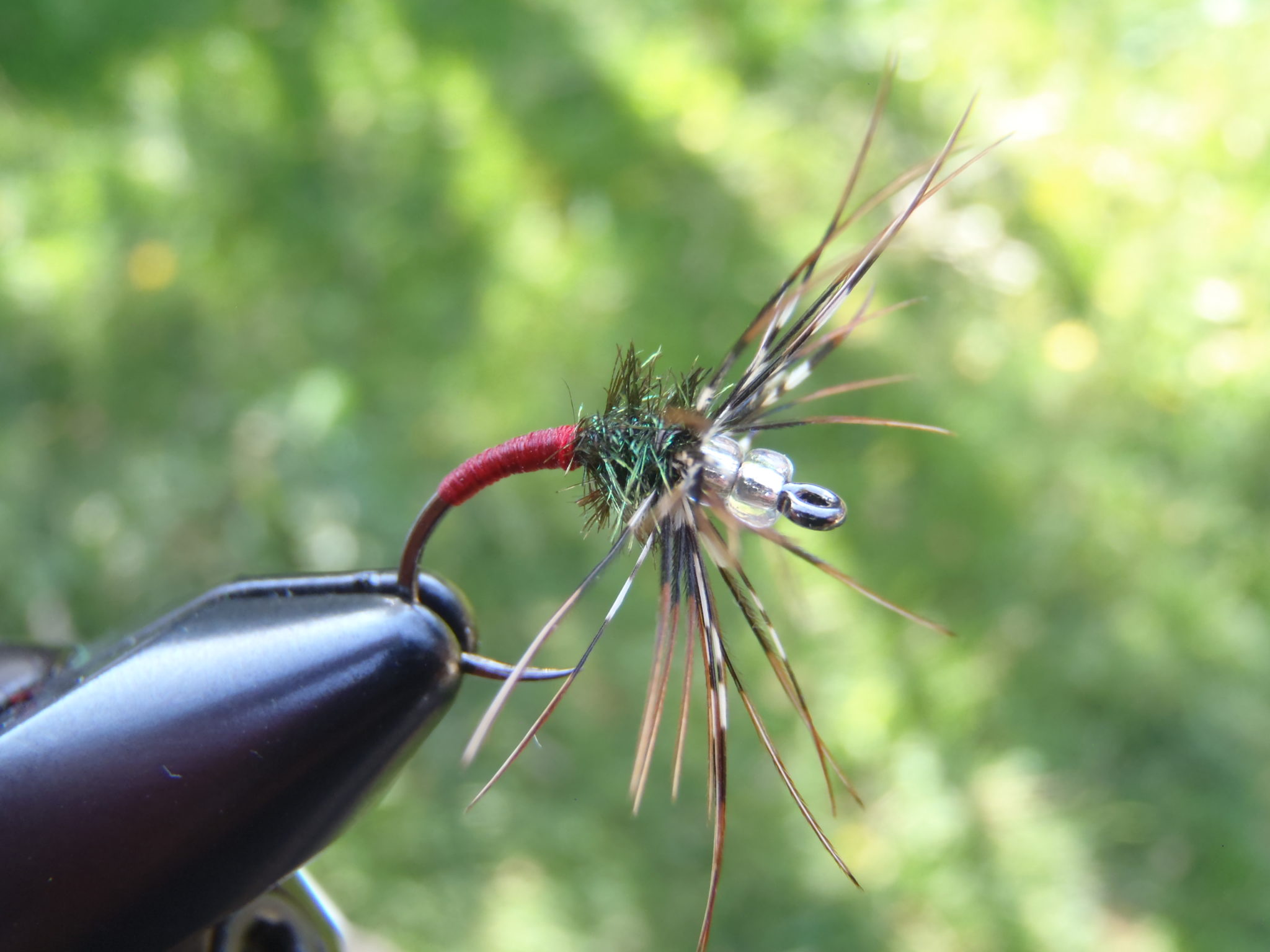 A dubbed caddis green sakasa kebari with blue beads
A dubbed caddis green sakasa kebari with blue beads
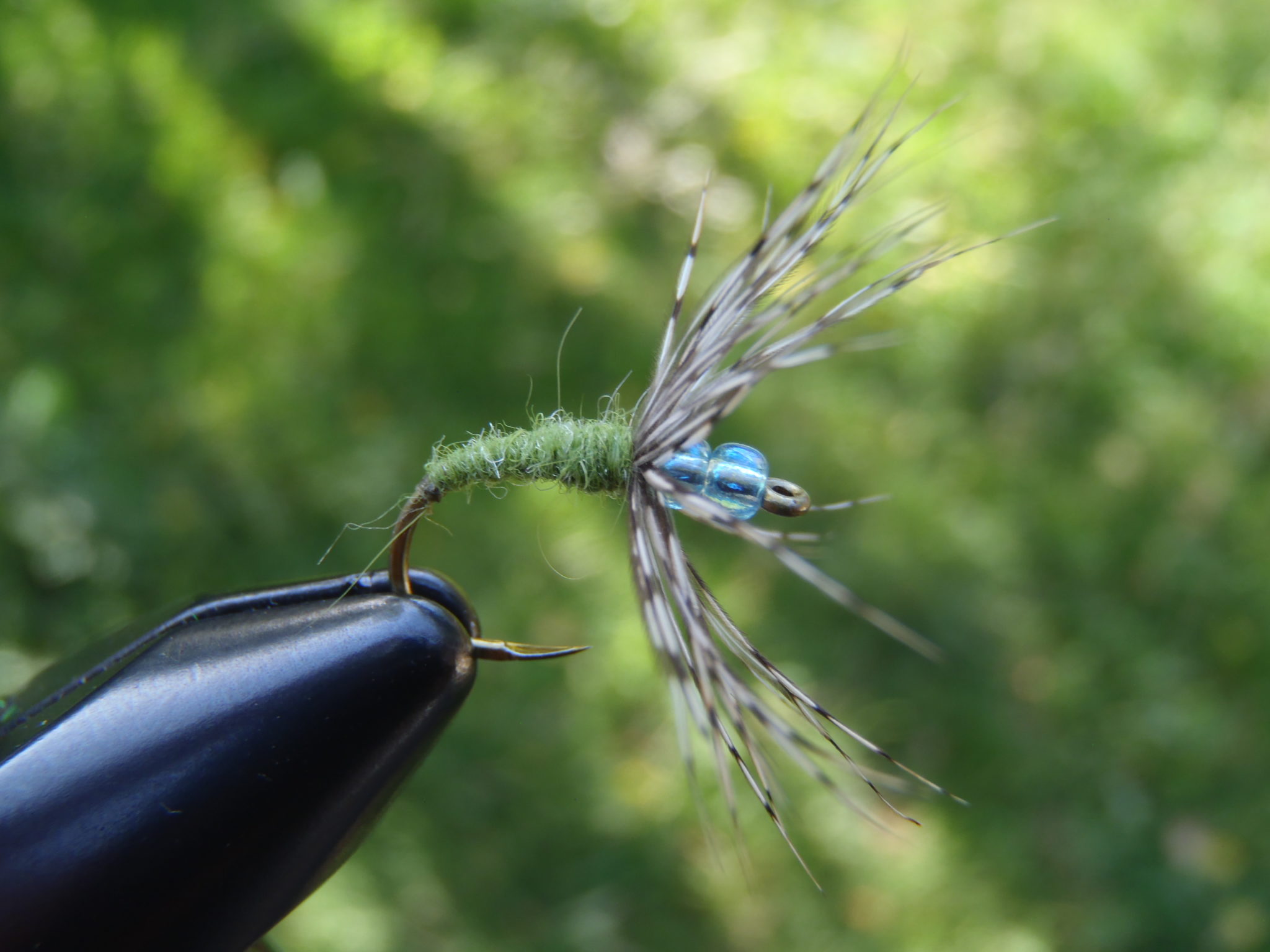 A stiff-hackle kebari with crystal/pearl beads
A stiff-hackle kebari with crystal/pearl beads
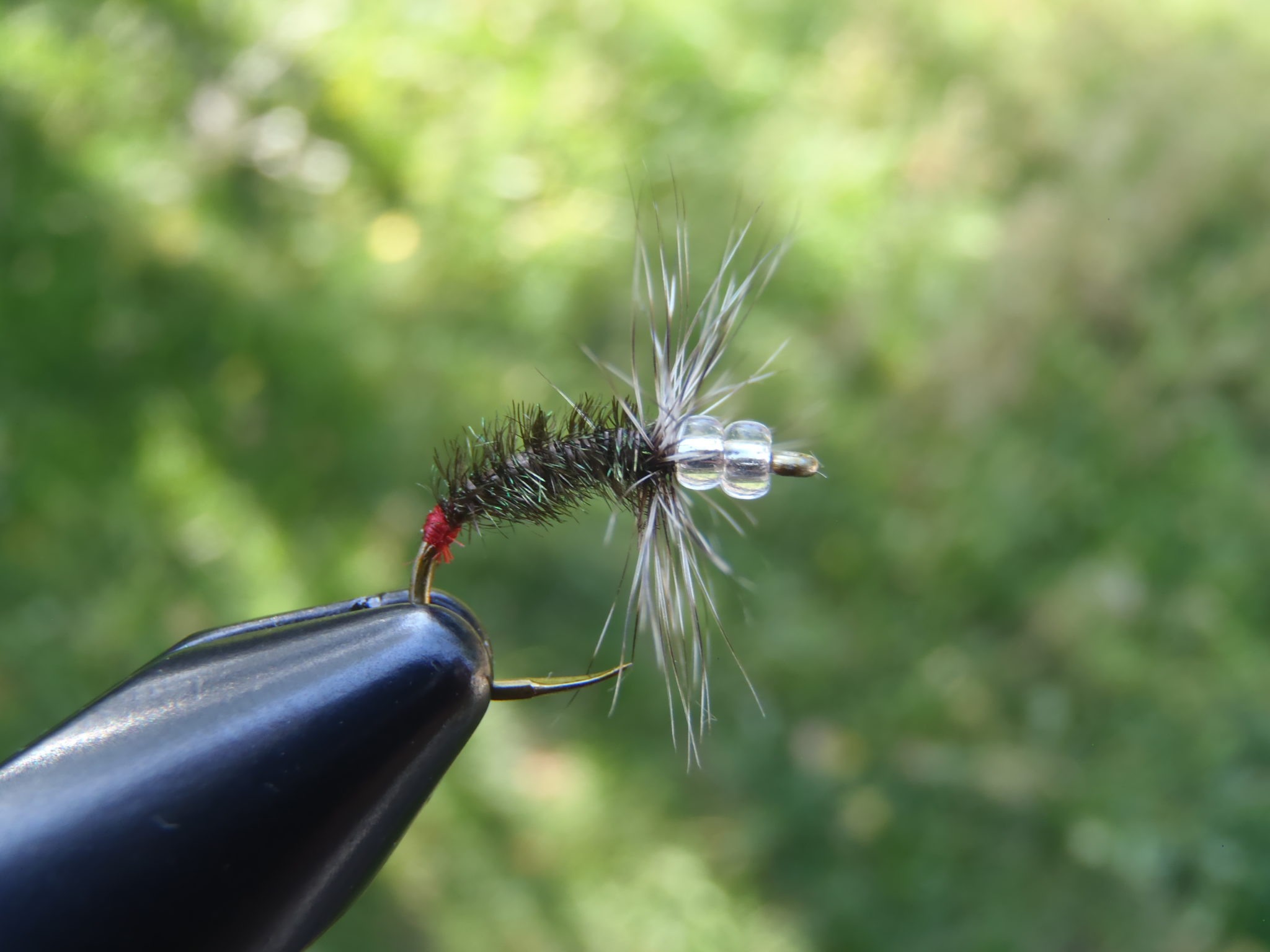 Partridge and orange
Partridge and orange
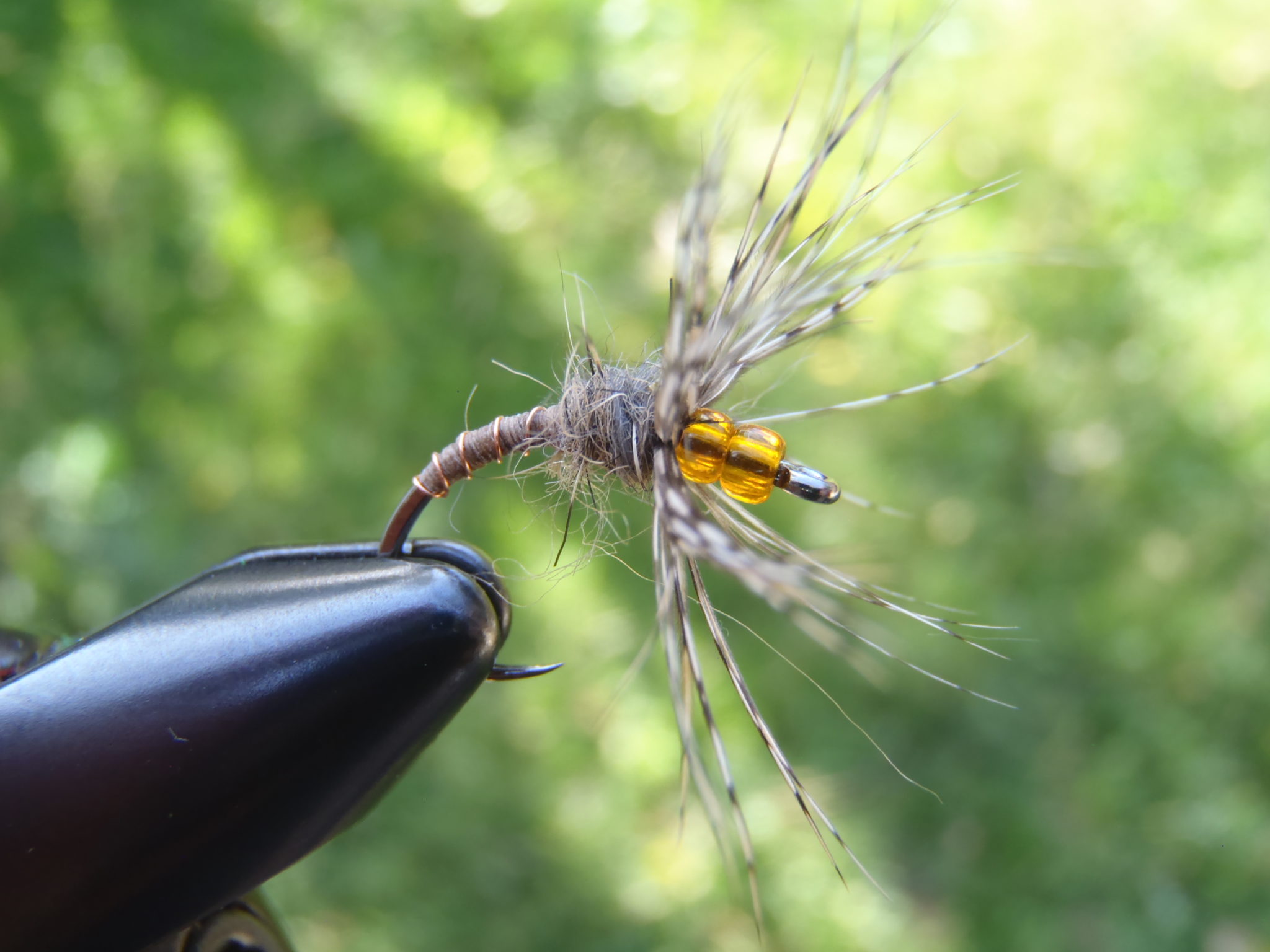 Starling and purple
Starling and purple
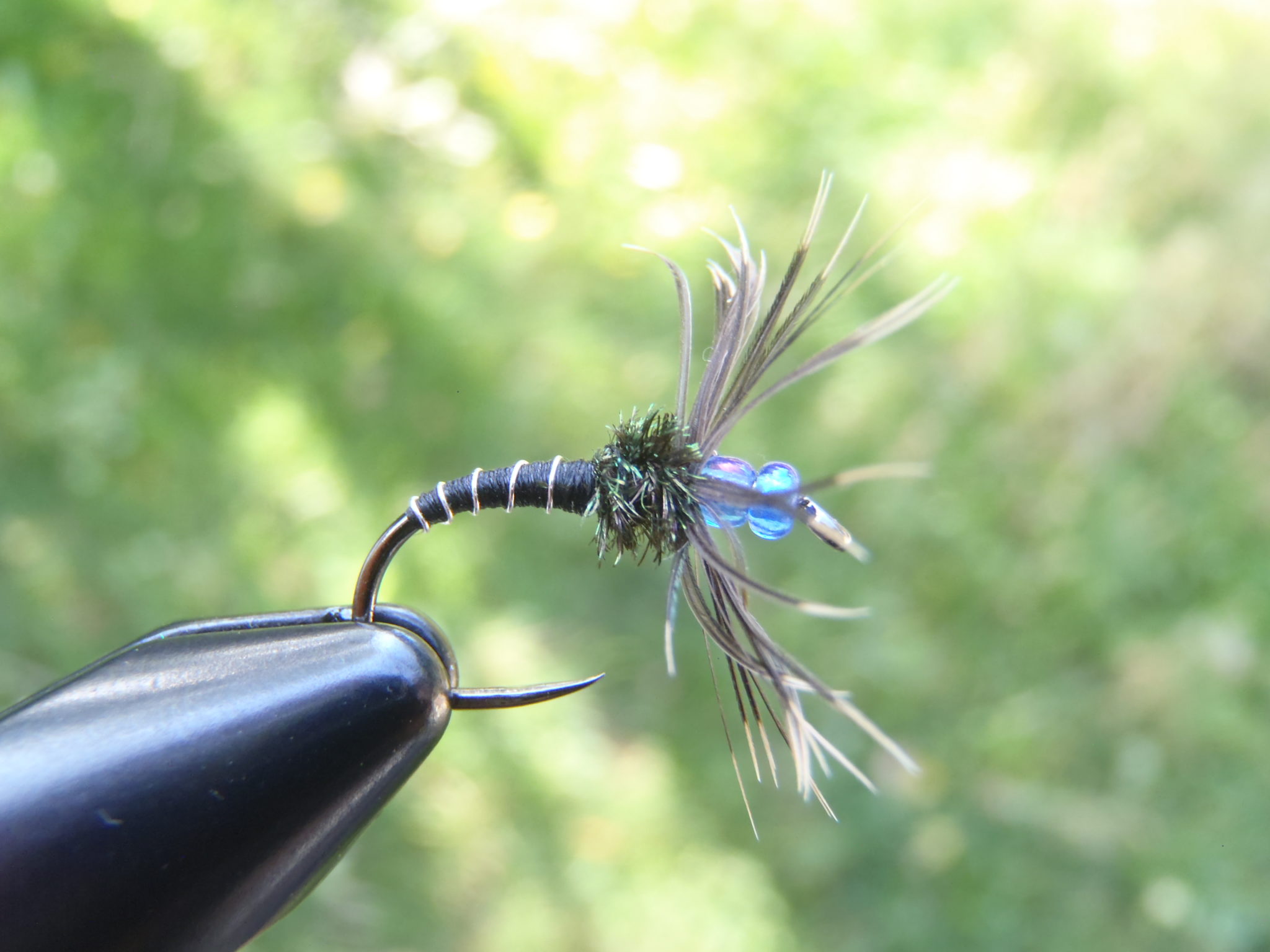 Brahma hen with one pink and one pearlescent bead
Brahma hen with one pink and one pearlescent bead
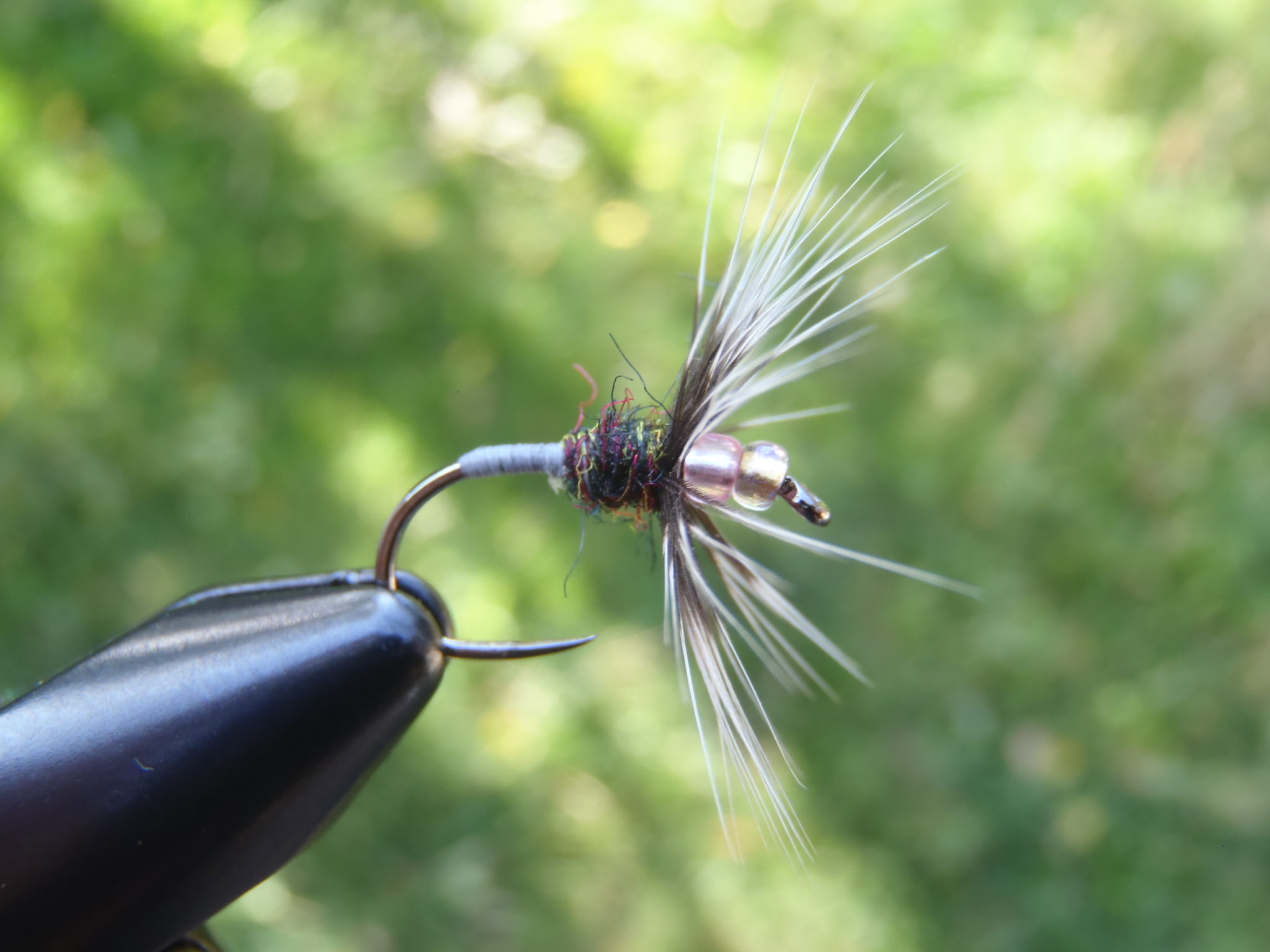 Amano Sakasa Kebari with one red bead and one crystal/pearl bead
Amano Sakasa Kebari with one red bead and one crystal/pearl bead
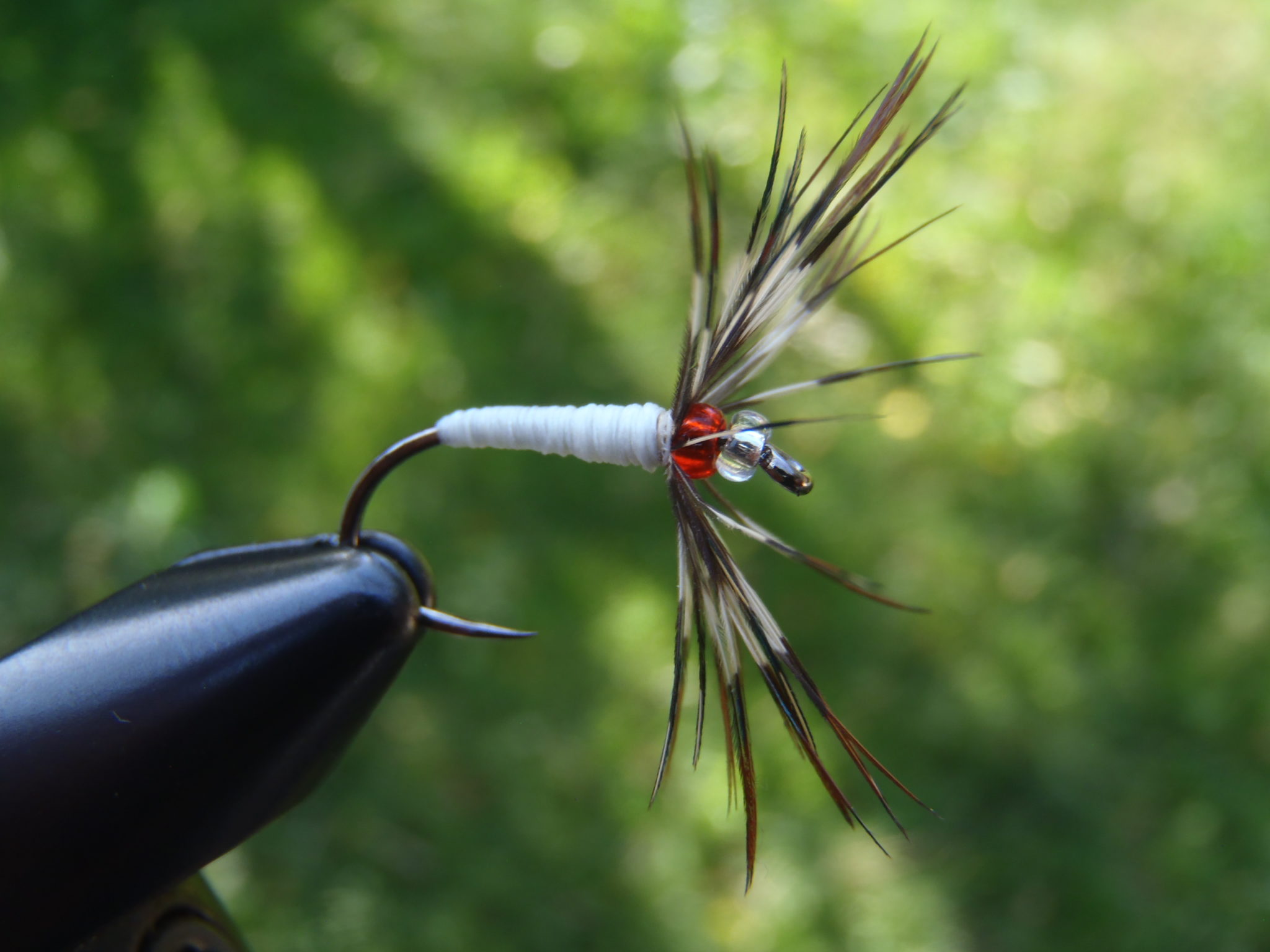 Once you start exploring them, you’ll see tying with glass beads creates not only very effective patterns, but allows for a lot of creativity at the vise. So put on your mad scientist lab coat and start experimenting! And please share your unique creations below.
Once you start exploring them, you’ll see tying with glass beads creates not only very effective patterns, but allows for a lot of creativity at the vise. So put on your mad scientist lab coat and start experimenting! And please share your unique creations below.








Dig it Jason. Love that spin on the partridge & orange!
Thanks guys! I’m still experimenting but this is a start. Going to try some other designs out tomorrow on Clear Creek.
Awesome Jason!
Very sharp looking.
Thanks for the ideas Jason! I am leading fly tying for our group this week and now have some new ideas! I’ll even get to try them out in Oklahoma next week.
What a cool idea! I will definitely give this a try. The water nearby that I fish is slammed on a regular basis. It will be fun to throw something they probably haven’t seen before. Thanks again. I enjoy your posts.
Excellent Jason… While I am at a novice level with Tenkara, I have bordered on fascination with the prospect of learning the related fly tying techniques – but thinking my senior age and related reduction of finger manipulation would be a problem. Seeing your assortment of Double-Pane Sakasa Kebari was the inspiration I was looking for to ‘take-the-bite, i.e. research equipment, training, and begin the learning process. With the approaching end of fishing season here in the Sierra’s it is a fitting fill-in activity for the interim months before next season’s start.
Thanks Jason. I have tied with glass beads for a few months but like the idea of using two on a Sakasa kebari pattern. I primarily use one Toho glass seed beads, silver lined, in size 11/0 for larger flies (12) and size 15/0 for smaller, down to size 20, to simulate an air bubble. The crystal clear colour works well for this. However the other colours and types all look great and there is no limit to the variations. For anybody interested there is a very useful book, published in the USA, ‘Tying with glass beads’ by Joe Warren.
Awesome kebari flies Jason. Do you feel 2 beads work better than one (no, this is not a pun from 2 heads are better than one).
I was hoping you had some data on the catch ratio from 2 beads vs. 1 bead. Anyway, this is really cool so thank you for sharing.
Note: Joe L. Warren wrote a book and made a video on beaded flies that you might want to look at.
Hi Mike,
Thanks! No, I don’t have any data on the difference in catch rates. All I know is that they work and are just fun to experiment with. As for the book (since both you and David mentioned it), it’s good. I actually used to sell it when I worked at The Orvis Shop in Williamsville, NY. But me and my friends were tying on glass beads long before it came out–long before glass beads were even available in any fly shop. So for us, it was nothing new. But it’s a good primer on getting started with glass. He covers flies for a variety of species so it would be good for people who also want to get ideas beyond just trout patterns.
Great read man! Good luck!
Hi Mitch. Ginger is just the color. I used Whiting dry fly 100s in that color.
You willingness to share ideas is inspiring Jason.
Double white beads, brown hackle and nothing else except my preferred thread colour of claret
Your willingness to share ideas and inspire creativity from your readers is wonderful Jason.
Claret Sakasa size 12, double white beads, brown hackle and my preferred claret thread
Thank you !
Hi Bob, nice! I have some claret seal that would make a great thorax. Now you’ve got me thinking …
Claret Sakasa with imi-seal thorax size 12.. You inspired me. Gee, you mean I can actually get YOU thinking…? Nice!
Some of my best ideas I stole from readers. 😉
Partridge and orange soft hackle is one of the best in a fly box. I am fascinated by your double bead concept. I look forward to creating more of them, and sending them for a swim
Another reader of Tenkara Talk ties this exact same fly but just uses orange instead of red thread. I recently acquired a lot of silk thread and will now be tying them with that and in different colors like blue, natural silk, black, and orange. Probably green too. The partridge and orange and partridge and green are just classic color combinations. I really like this fly because just like a western soft hackle, there’s plenty of room for experimentation.